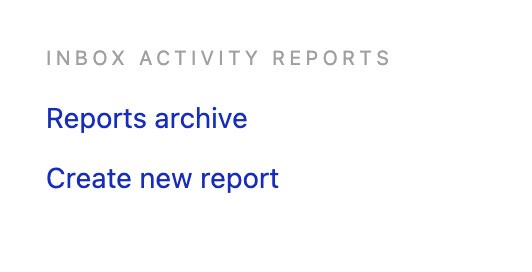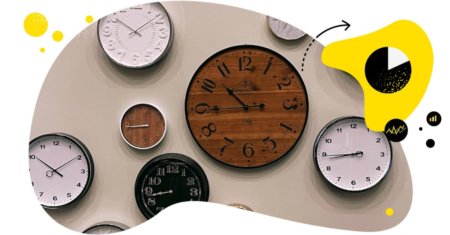Table of Contents
- Social media report automation – or what exactly?
- Why you should automate social media reports if you’re an agency (or work for one)
- Key metrics to include in social media reports for clients
- NapoleonCat’s social media report automation for agencies
- How to set up automated social media reports with NapoleonCat
- To automate or not to automate – that’s not the question
I hate to be the one to say it, but creating social media reports can be a pain if you’re not really into numbers. But hey, what’s automation for? Here’s how social media report automation for agencies works, and why you should go for it if you’re not that into spreadsheets.
- Social media report automation – or what exactly?
- Why you should automate social media reports if you’re an agency (or work for one)
- Key metrics to include in social media reports for clients
- NapoleonCat’s social media report automation for agencies
- How to set up automated social media reports with NapoleonCat
- To automate or not to automate – that’s not the question

Automatic reports for Facebook, Instagram and LinkedIn
Generate in-depth reports for Facebook, Instagram, and LinkedIn. Analyze your competitors and improve your strategy – with an all-in-one social media tool.
Social media report automation – or what exactly?
When you run a social media marketing agency, or work for one, growing social media presence for multiple clients, automation is your friend – no doubt about it. And the more clients you have, the better friend it is.
With social media management tools, you can automate some parts of comment moderation or content publishing. And you can also automate social media reporting.
In fact, social media reporting is probably one of the easiest and most straightforward things to automate.
I mean, think about your usual reporting process for clients and what it involves.
Checking all social media platform analytics and insights?
Downloading (if possible) and pasting them into an Excel spreadsheet?
Crunching the numbers? Or sending them to your analytics guy/gal to do it?
Then extracting what’s important and putting it into a presentation (that the design guy/gal has to design, or at least adjust if they’ve already created a template for said client)?
And when that’s done, only then send it to your client?
And that’s every what, week, month, quarter, all over again, for each client?
By automating your social media reports, you can basically eliminate most of that work, reducing it to minutes instead of days.
With access to a social media analytics and automated reporting tool, you can have that all done within one platform. No spreadsheets, no design tasks, no talking to your analytics person. (Unless you really like them, then who am I to tell you not to.)
You literally click a few times and get a ready-made report. That’s automation. But don’t worry, I’ll get into more details of the process for social media report automation for agencies later on in this article.
Why you should automate social media reports if you’re an agency (or work for one)
Well, the previous paragraph might already hint at the answers to this question. But let me put it in a few nice bullet points, so there’s no doubt about what social media automation tools mean for your agency when it comes to automating reports.
- You save time. That’s probably the biggest one. And not just your time, but possibly also the time other members of your time need to spend helping you crunch the numbers or design the deck for the client.
- You and your team can get more productive, and focus on other tasks, like social media strategy or content strategies and creation. Not worn out by days working on the latest report (which, let’s face it, most people hate. No offense if you’re not one of those people.)
- You make a good impression on your clients with much less effort, without compromising the result. Of course, only if the automation leads to a professional-looking report (yes, I’ll show you how to do it.) With many clients on board, being able to do this easily at scale is really something. And we all know clients care not just about the results, but also how you present them (some more than others…)
- And, last but not least, you don’t have to talk to that analytics guy. (Unless you want to, we’ve already been over that). Or send the graphic designer another time-consuming task she’ll complete next week, just minutes before you’re supposed to send it to your client. You’re in control of the process, and if you automate it right, the report sends itself to the right email. 🤯 I know.

Automatic reports for Facebook, Instagram and LinkedIn
Generate in-depth reports for Facebook, Instagram, and LinkedIn. Analyze your competitors and improve your strategy – with an all-in-one social media tool.
Key metrics to include in social media reports for clients
Let me start this one with every marketer’s favorite answer “It depends”.
What metrics you include in your social media reports depends on things such as:
- the social media platform(s)
- and your client’s individual marketing strategies and goals
- your goals as an agency.
But of course, with a limited range of metrics you can put in a report, deciding which to include is much easier than that. Let’s look at some examples:
Audience metrics
This will include anything related to your social media followers, for example:
- Number of followers – the current number of people following your account.
- Follower growth showing how the number changes over time, including new follows and unfollows.
- Follower demographics including location, gender, and age.
- Active users
- Audience activity during the day and throughout the week to indicate the best times to post your content when you’re audience is online and scrolling.
Reach metrics
Anything that tells how many people your content and account reaches on social media. For example:
- Impressions
- Visits to your social media page
- Video plays
That kind of thing.
Engagement metrics
Anything that shows interactions with your social media profile and content and how people engage with it. This could include:
- Likes & other interactions
- Comments
- Shares
- Post saves
- Private messages
- Engagement rate, calculated depending on the social media platform.
Page and content performance metrics
I’ve turned it into a separate bullet point, although most of the engagement or reach metrics will go here, so it’s all a matter of how you categorize the metrics in the report.
For page performance, you’ll look at all the numbers related to your social media profile, like how many people visit it.
For post performance, you’ll look at the engagement and reach from the POV of an individual post. You can also look at your content collectively over a selected time range (which will still be different from your page performance as such.)
You can also include top-performing posts which can tell you both what type of content works best for your audience and when’s a good time to post content for the best engagement.
Admin activity metrics
This will show you the effectiveness of your team in managing your clients’ social media channels and can include:
- Social media posts published to see the content publishing activity.
- Response times to track moderation effectiveness and improve customer service.
NapoleonCat’s social media report automation for agencies
Okay, this is the fun part.
If you’re using NapoleonCat to manage your social media channels or analyze social media statistics (or both, because yes, you can do that, too), you can automate your social media reporting.
Here’s how it works in a few steps:
- You connect your clients’ social media profiles, and you can also analyze their competitors’ social media channels to create benchmarking reports and compare results.
- You generate a social media report in a client’s workspace. You pick the social media platforms to include and the main metrics you want to focus on.
- You can also add your logo or your client’s logo to brand the report.
- And then, you generate the report. That’s seriously it.
- You can also schedule your reports periodically and have them sent automatically to your client’s emails every week, month, or quarter. Once you generate one, you literally don’t have to do anything. Now that’s what you call helpful automation.
Let me show you how that’s done.

If you do like some work, you can also download graphs from the analytics tab and put them individually in your presentation, if you’re going for something really fancy. No judgement.
How to set up automated social media reports with NapoleonCat
Here’s how to create a one-off social media report in NapoleonCat.
- Go to the Reports tab in NapoleonCat.
- Click “Create new report.”
- Select the time range – it can be completely custom.

- Upload your logo. You can also choose to remove NapoleonCat’s branding.

- Select your profiles. You can create reports for Facebook, Instagram, and LinkedIn.

- Then select the metrics to include in the report. The list will depend on the social media platform and whether you manage or follow a profile.

- Then click “Generate” and wait for the data to process and get turned into a nice-looking PDF. Here’s a sample page:

If you want to schedule a periodic report, click “Schedule new report” at the beginning of the process and set up the frequency (week, month, or quarter) and the emails to which you want the report to be automatically sent.

From the menu on the left, you can also create an Inbox Activity Report to monitor the effectiveness of your social media moderation.

- Select a time range for the report.
- Then specify the working hours for your moderation team.

- Then select the profiles and parameters you want the report to include:

- Then click “Generate” and wait for the report to, well, generate. 🙂
To automate or not to automate – that’s not the question
The question is what automated tools to use and when.
And if you want to try NapoleonCat’s reports, give it a completely free go here. Plus, if you’re a big agency with big needs, multiple clients, and social media campaigns, get in touch for a custom plan with more custom reports and white-label options.

Simplify Social Media
Management with One Tool
- Manage & reply to comments and DMs in one place.
- Monitor ad comments from multiple accounts.
- Automate answers to repetitive questions.
- Schedule posts to multiple accounts, on desktop.
- Analyze performance and monitor hashtags.
- Keep track of your competition.
- Create or schedule in-depth reports in seconds.
You may also like:
- How to Create a Social Media Report Without Breaking a Sweat
- The Easiest Way to Create a Weekly Social Media Report
- How to Create an Instagram Analytics Report
- How to Create a Monthly Social Media Report (in under 1 minute)
- How to Create a Facebook Analytics Report (in under 1 minute)
- Creating Facebook and Instagram Analytics Reports: A Guide
- Your Guide to LinkedIn Analytics Reports





